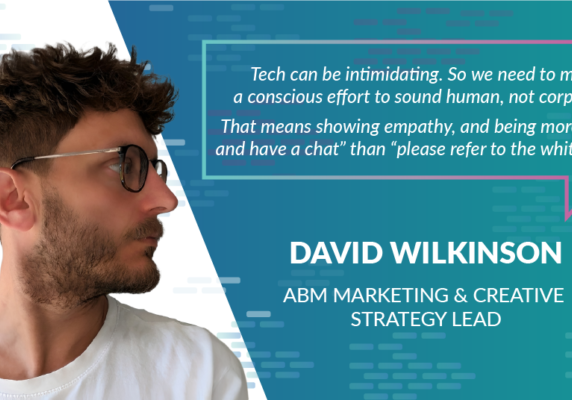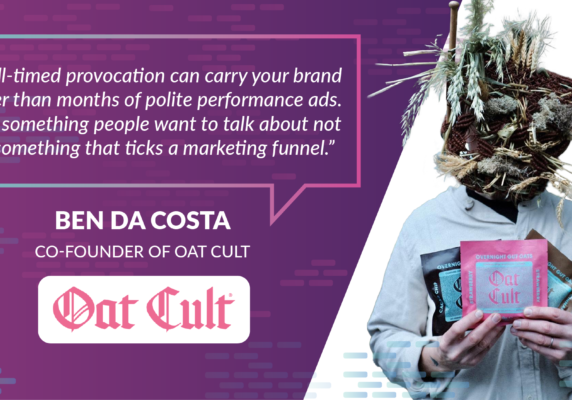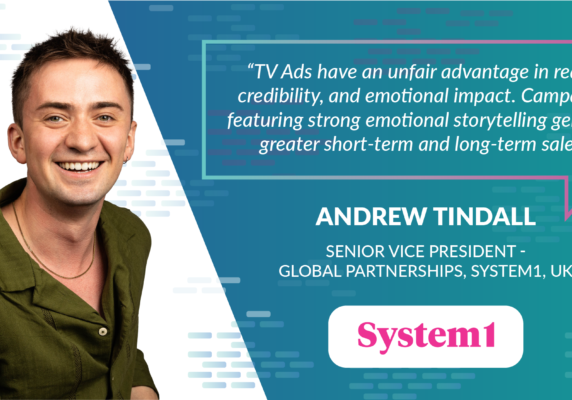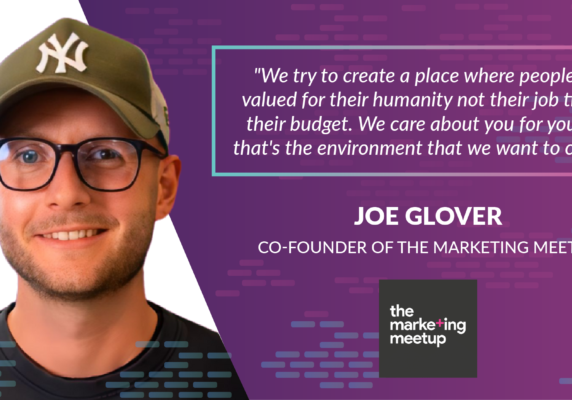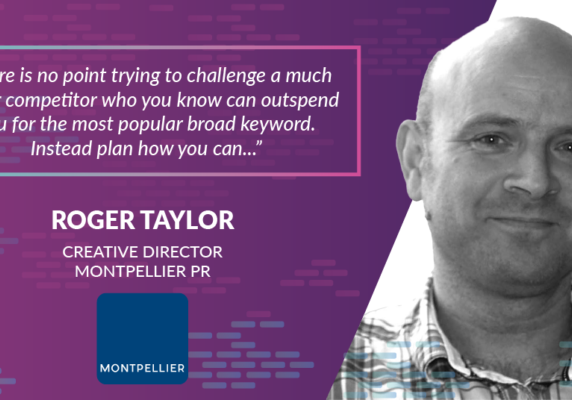B2B Marketing Expert Interviews – Petra Hauser
We are delighted to welcome Petra Hauser, CEO founder of Exponential Business Hub and Ambassador for Singularity University to our B2B Expert Interviews segment. Hello and welcome, Petra.

If I may start by asking, the company you founded, Exponential Business Hub has the mission statement: “We work with robots, AI, IoT and space, but we fight for the human factor.” Can you tell us a little more about the human factor and how it relates to the marketing realm?
What we find in most of the transformation projects we work in, is that companies get easily lost in the various technological opportunities promised by tech consulting companies, start-ups or the tech providers themselves. If this happens, the true problems needing to be solved, as well as the users or clients fall behind the tech agenda. This is the wrong approach. This is why we place the human factor – meaning human-centric or user-centric design – at our core, while our tech understanding comes second.
“Targeting and trying out different strategies in bringing the content to the users has to be done DURING the campaign.”
What would you say are the most interesting exponential technologies that are emerging and which B2B enterprises should keep their eye on?
The most interesting thing is actually the CONVERGENCE of exponential techs such as AI, robotics, blockchain and IoT for example. What the perfect mix is for a company will be determined by their specific problem or opportunity, and then defining which exponential tech to apply in trials. This is why we focus on design thinking and lean business model design to do the individual homework first, before jumping into exponential tech trials.
From your experience, are there reliable ways for businesses to identify such exponential technologies early on? (Thinking of how post-discovery of an exponential technology – the tech in question can linger in a state of distrust or disinterest for a considerable period of time (e.g. 3D printers or AI) before becoming disruptive and viable or even discarded.)
Again, the solution is to experiment, experiment and experiment. Doing so, in a structured way based on your specific strategic goals and problems. ‘In a structured way’ means using the tools and techniques also used by Amazon et al, like design thinking and Lean Stack.
“Most campaigns are too complicated in their set-up with any valuable findings buried by tons of irrelevant data points.”
We touched on AI just now and I remembered an interesting comment you made following Facebook’s experiment with artificial general intelligence (AGI). You said: “…when we go further than AGI then we come into areas that have the potential to be creative. I am afraid of that.” Can you elaborate on what you meant by this?
If you watch videos covering state-of-the-art humanoid robots like Hanson Robotic’s Sophia, you will understand what I mean. One thing is the ability of machine learning AIs to fulfil tasks that they were taught either by supervised or reinforcement learning, and to do so exponentially faster and better than humans. The other thing is when General AIs come to their own conclusions that might include not obeying human orders any more. We experience this already in parts. Now imagine those General AI capabilities coming together in the cloud? That is the reason why Elon Musk considers AI to become a major threat for mankind.
“Media consumption is changing dramatically and can no longer be predicted or forecast for the year ahead…”
As a business innovator and someone who looks to the future, are there any core areas within B2B marketing departments which you would like to see change/improve? Are the solutions to these issues available presently or on the horizon.
1. Relying on traditional market research
When you look at the methods used to generate media KPIs in all forms of traditional media such as print, TV, radio OOH (out-of-home surveys) and then ask the questions how this research data shall relate to an actual measurement of the effectiveness of an ad – you will notice that those surveys date back to a world that was more analogue than digital. Relying on these forms of data – which is the practice for 99% of the marketing departments – is outdated.
2. Allocating without experimenting
Another practice is to negotiate rates with media partners and then allocate budgets. Who tells you that those specific media platforms you negotiated a great rate with, are relevant at all for your current campaign? Media consumption is changing dramatically and can no longer be predicted or forecast for the year ahead – however a year’s duration is still the length of time that contracts with media partners are created for. Which is an out-dated approach too!
What are the solutions for these issues? Start experimenting! Set up trial campaigns with mini budgets, learn from real-time data and then allocate the bigger budgets!
How much of the above can be considered mindset & how can businesses ensure they focus/build/instil positivity to maintain such an outlook?
A great portion of all the new practices is do with mindset. There is even a name for it: ‘new ways of working’. I came from the traditional marketing field and went into innovation management where I touched base with those new ways of working. I understood how powerful they are and how dramatically business approaches have to change if you want to remain part of the game. Now, I am able to apply those new ways of working to marketing which makes a big difference given the fact that marketing budgets are often ranked no. 2 in the cost structure of companies.
“Data scientists shall be there to clear up your data jungle.”
There seems to be a constant drive towards hyper-personalisation; that marketeers should dig deep and narrow with regards to creating highly-focused and tightly targeted content. To do so, they must know the lay-of-the-land in detail – as well as tracking their own performance. However, many brands report failure to do so. Where is it likely they are going wrong?
Most of the brands are still working with agencies that deliver (if the clients are lucky) a report directly AFTER a campaign has finished. Targeting and trying out different strategies in bringing the content to the users has to be done DURING the campaign. This means extra effort that most agencies are trying to avoid or at least to limit.
Also, brands should work out ways of how to include RELEVANT CRM DATA in campaigns with one rule to obey: KEEP IT SIMPLE! Most campaigns are too complicated in their set-up with any valuable findings buried by tons of irrelevant data points.
Where it may be a step too far for a company of limited size or resources to accurately interpret their analytics, does the drive to experiment over execution provide part of the solution?
Absolutely! As I said, keep it simple! Experiment with different messages/layouts to predefined user groups (personas), then set mini budgets on different digital channels that provide you with instant feedback and then go for the best!
“[VR] Avatars will offer the opportunity to be in several places at the same time – giving a speech at a conference in San Fran, taking part in a product presentation in Singapore and physically staying at a beach in Florida…”
Are data scientists really the best chance to ensure brands stay informed and through doing so, relevant and competitive?
Data scientists shall be there to clear up your data jungle. They are not the ones setting up the campaigns and defining strategies on how to best communicate with your users. However, they are really helpful with preparing data for econometric modellings – to train machine learning algorithms with your campaign data etc. Let them sit together with the marketeers and help to achieve the desired outcome.
“… we focus on design thinking and lean business model design to do the individual homework first before jumping into tech trials.”
From your experience how can brands improve the way they work with media agencies?
As even traditional media continues in the digital direction it becomes more vital for brands to set up new contracts with the agencies, entering into a transparency model regarding media kick-backs and engage them more in your daily work. Therefore: Set up new contracts with the agencies, enter into a transparency model regarding media kick-backs and engage them more in your daily work.
“Start experimenting! Set up trial campaigns with mini budgets, learn from real-time data and then allocate the bigger budgets!”
Finally, what are your thoughts on the way Virtual Reality, Augmented and Mixed reality are developing? Where in marketing do you see their greatest value?
In the short term, I believe it will be within the area of customer delight – think of travel or luxury properties.
In the long term; within the area of virtual experiences for avatars. Avatars will offer the opportunity to be in several places at the same time – giving a speech at a conference in San Fran, taking part in a product presentation in Singapore and physically staying at a beach in Florida being informed about the experiences your avatars are having in the meantime.
I would like to take this opportunity to thank you Petra, for your very thought-provoking answers and valuable insights.
If you are a B2B Marketing expert and would like to share your thoughts on a range of topics, please get in touch with us by clicking on the ‘Let Us Interview You’ button below.

